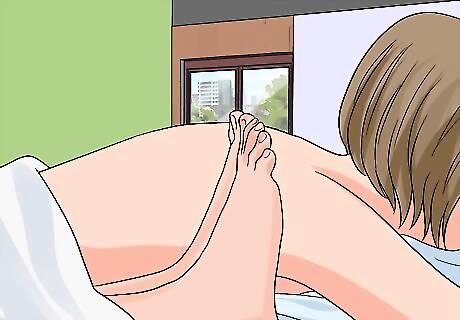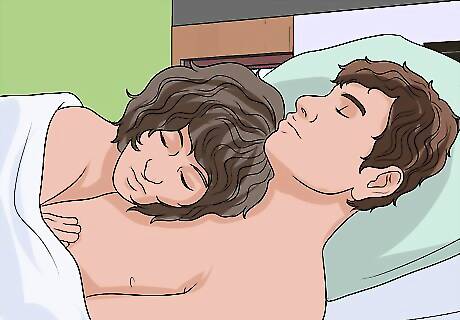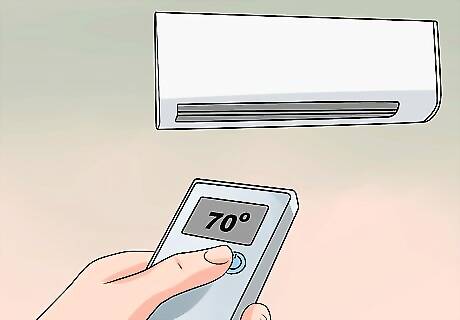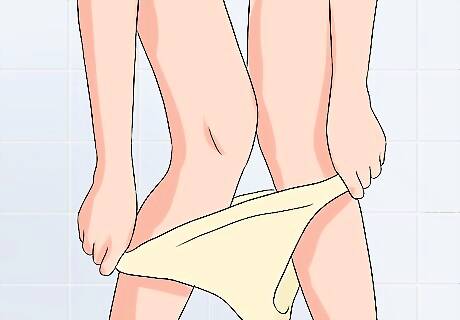
views
Trying Different Positions

Try normal spooning. Spooning is one of the most common positions for couples to try. Traditionally, the taller partner lies on their side with the shorter partner curled up along their torso and under their head. This is quite size-efficient. This can cause the taller person to get hot, as their partner will be laying in front of their torso. If the shorter person has long hair, this can be an additional source of discomfort.

Try "Jet-Packing". This is a good spooning variation for when the taller partner overheats or if they are bothered by hair in their face. The shorter partner instead spoons the taller one. This can be less size-efficient but can be very helpful for temperature and hair management.

Try sleeping top-to-tail or "69". Each persons head should be around shin or ankle level for the other person. While this isn't necessarily the most romantic (no stinky feet allowed!) it is quite size efficient and allows both partners to sleep and breathe without the breathing of the other partner interfering with them.

Try with the shorter partner on the taller partner's chest. The shorter partner can lie their head on the taller partner's chest directly below the shoulder. The taller partner may want to use extra pillows to elevate their head and neck area slightly so that they can breathe more easily. Raising their head will also help prevent the shorter partner's hair from bothering them. Elevating the head will also help mitigate snoring.
Cooperating With Your Partner

Consider enjoying intimacy. Assuming you are both partnered consenting adults or partnered consenting minors, you may want to consider engaging in intimacy. Sexual satisfaction releases endorphins, a "feel good" chemical in your brain that makes sleeping easier and helps establish a connection to your sexual partner. Of course, ideally this happened naturally and not because of reading this.

Communicate with your partner. If you understand each others sleep preferences you may be able to work out how best to approach the lack of space. While the healthiest sleep position is on your back, both partner's won't have room to do this. Discuss how much each person wants to use the covers so you can plan accordingly.

Keep the toilet in consideration. If you are a person who goes to the toilet frequently at night, put yourself on the 'outside' of the bed. Most single beds have one side against a wall. If this isn't the case, position yourself on whichever side is closer to the restroom.

Let your partner sleep. If you wake up first, try not to wake your partner. Odds are they had less rest than usual due to sharing a single bed. If you absolutely must wake them, try to do it in a particularly gentle or pleasant way.
Controlling Your Environment

Turn the temperature down. Since the ideal sleep temperature is around 70 degrees Fahrenheit, one of the most common issues with sleeping together in a small bed is overheating. Turning the thermostat down or opening the window to make the room cold will make it easier - and even more enjoyable - for the two of you to get cozy. You can also use a fan that you place ice cubes in front of to cool the room.

Set the mood with music or ambient noise. Many people sleep easier if there is gentle ambient noise or relaxing music. This may make it easier for you and your partner to sleep. Discuss first.

Wear light (or no) clothing. Thick flannel and or fleece are terrible ideas. If you must wear clothes, aim for thin summery underwear or pajamas. You can ask your partner to borrow a pair of shorts or boxers if you don't have anything light.

Switch your bedding. It's also a good idea to switch to a more summery duvet and blanket instead of a thick duvet. You can add or remove thinner layers to create an optimum temperature for the both of you. A thick duvet or comforter is more difficult to manipulate.

Get ready for bed. Both of you should brush your teeth and use the bathroom. You both want to be as comfortable as possible, and using the restroom is especially important because in a single bed it is difficult for one person to get up without waking the other. Remove items like watches and jewelry that could annoy or irritate the other person. Put phones aside and on silent, setting an alarm for the morning if need be.



















Comments
0 comment